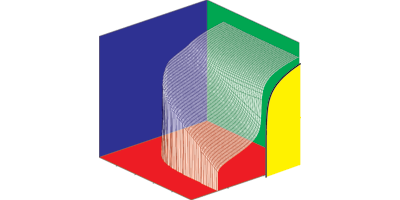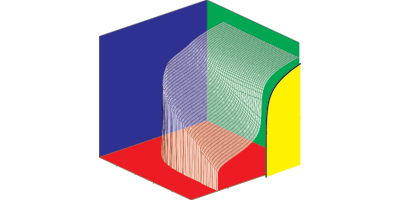Separating Glass and Jamming Transitions
When compressed, suspensions of particles change to a solid by going through either a glass or a jamming transition. The volume fraction filled by the particles when solidity sets in is similar for the two cases, but the glass transition originates at equilibrium, whereas the jamming transition—occurring in systems such as foams or granular materials—originates far from equilibrium. Though their rheological properties are closely related in many ways, now a study demonstrates that these transitions are qualitatively different.
Writing in Physical Review Letters, Atsushi Ikeda of Montpellier 2 University and CNRS, France, and collaborators report work on simulated flows of concentrated assemblies of soft repulsive particles at a large volume fraction. They varied the relative strength of thermal fluctuations and viscous dissipation to study the whole range from thermal suspensions that obey Brownian motion to athermal suspensions—relevant to jammed colloids—that do not. Ikeda et al. report that shear viscosities for the thermal state and the jammed state as a function of packing fractions are unrelated, leading them to conclude that, even though they are characterized by similar macroscopic flow behavior, glass and jamming transitions occur over well-separated time and stress scales. The phase diagram they obtain enables separation of the curves that display the flow behavior for glass and jamming transitions, even as the temperature goes down to zero. – Daniel Ucko
Correction (18 July 2012): The original article incorrectly stated that the glass transition occurs at equilibrium. The statement has been corrected to say that it originates from equilibrium.





